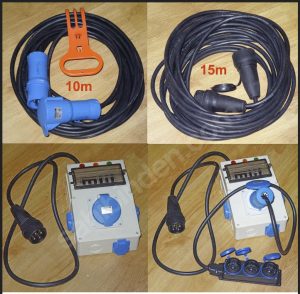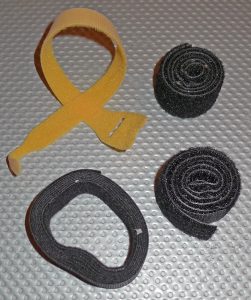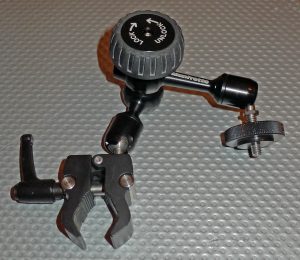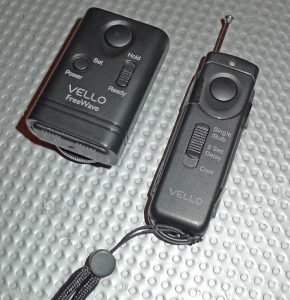Some tools you may need in various shooting conditions
“It’s good to trust, it’s better not to trust, it’s best to be cautious.”
Murphy’s laws are always at work and catch you at your most unprepared moment. The only solution to dealing with these situations is to be cautious, even very very cautious !
If you are asked to list what you need while shooting, you first say a camera, lens, and then a tripod, other related materials and the list goes on as flash, triggers, memory cards,chargers etc..
Basically, yes.
The types and numbers of these materials increase respectively with the conditions.
I would like to note here that the names or brands of equipment mentioned in my blog are given as a part of my personal experience in my works.
A tripod, a few extra lenses, a large bag to carry lenses, flash, remote triggers, colored filters or umbrellas or boxes in front of the flash, and stand adapters,polarizing filters (maybe close-up filters), if you need filters of different sizes, converter rings, measuring devices, etc.
it is easy to extend this list so on..
İt’s easier to fix a problem in the studio than outside. While working outside, you have to carry many things in case. So you get heavier in time and fatigue increases the risk of making mistakes, but not carrying these materials would be a bigger mistake even some gamble..
This is why I have been working with so much material working outside.
İf I needed 20.000 watts of light I often took 30.000 watts or 40 tripods for lighting instead of 30.
I carried nearly forty bags and 2-3 wheeled carriers for these bags.
At least 10 tapes of different characteristics and lengths, adhesive, hot silicone gun and gun tips, threaded staples and paper clips, warnings attached to the plug-in part of cables, wires, tires and ropes of different characteristics, scissors of different sizes, knife ..
Thanks to being highly cautious, my work did not hinder for once.
And some other materials you may need in outdoor shooting as follows,
Electrical materials
* Cables;
The power cables with grounded sockets, single or multiple switches, extension cables.
* Multiplexers;
Socket multiplexers, thick cables with open ends, (as the power distribution measured in advance ) the main distributor boxes(4×2000 watt), switched or switchless multiplexers, remote controlled (socket) multiplexers, socket converters, various bulbs sockets.
-
- Bulbs; 25, 40, 40, 75, 90, 120 watt, thin, thick socket, rod, pin-foot, pumpkin, opaque, mushroom, spot shaped, from 25 to 5,000 Watts, spare bulbs etc.
- Some measurement and repair materials.Multimeters, spare batteries, control pen, screwdriver at different ends, types of pliers, knife and so on. Screws for cable, plug and socket repair. Electrical cable bands of different colors.
- To protect computers, monitors or similar devices, a UPS between 1000-2000 Watt.
You may keep some little tools in your vest or waist bag. A comfortable picnic seat in your vehicle will be better than the 3-legged professional portable stool pictured below.
* A bottle of water, coffee or tea in a thermos flask, extra under wears, a polar fleece, a coat in your bag for cold days..
Carrying the tripod with a strap on your shoulder allows you to use 2 hands at the same time. Personally,I prefer carabiner clips to shoulder straps. While working with the tripod, an easy removable camera strap will make you very comfortable.
Use a lens bracket and a second strap around your neck that will slightly loosen the machine strap with it.
* Have a first aid-kit of which you can have details from related websites
(a medic alert bracelet or necklace if necessary).
* Be informed also about local security issues, scams and fraud risks. (Apollo Robins’ videos are very interesting)
* (Professional) Tripods and Tripod Heads,
The stand adapter part of many clamped lenses can be replaced with this type (Arca-Swiss type) adapters.
A set of screwdrivers and covers to protect tripod heads from dust.
-
- The spares of the spinning wheel arms of heavy heads such as MA400.
- As I mentioned on (Professional) Tripods and Tripod Heads, a compass and a water scale will be useful to get more accuracy.
- fastening tools and screw clamps to be used to assure stability of your tripod and cameraTouch Fastener Straps, covered wires ( to avoid damaging the place of contact)
Cloth bags to put some weight in when it is necessary to fix the tripod.
Plastic garbage bags to put your equipment on in a dirty place like toilets and to cover your stuff in rain.
- fastening tools and screw clamps to be used to assure stability of your tripod and cameraTouch Fastener Straps, covered wires ( to avoid damaging the place of contact)
- Spare batteries;( cameras,triggers,similar electronic devices) and the boxes to carry safely these batteries.
-
- as detailed on “panorama shots”, headlights and flashlights of different sizes and power.
- 2 headlights seen below are adjustable and the one on the right is especially good when working in the dark.
- The other flashlights of 200-5000 Lumen are for light painting. I have also added some special parts to flashlights to control angle and light character.
-
- Camera triggers (formerly known as shutter release cables),wireless or wired ones..
My priority is wireless triggers when working with
long exposure (over 1 sec.)and low shutter speeds.
( with heavy, 500 mm or 800 mm telephoto lenses )
İn worst cases, self-timer option available on camera.
-
- Soft or hard boxes or cases in different sizes to carry properly all these tools.
* Memory cards,
I always use JPG and RAW options at the same time
(4 or 6 cards at least for each camera).
- a note camera ; by this I mean a digital pocket camera with a zoom lens you can take visual notes with. A small desk or a tool to position it in case.
* Especially when you go outside, you may not be able to find a smooth floor to put the camera and lenses when changing cameras and lenses,
To prevent damage to the camera and lenses (cleanable and impact-reducing honeycomb soft silicone) rubbers are very useful.
——————————————————————————————————-
What I take in a bag when I go to my professional location shoot
Please send your questions by the email addresses on my webpage.
You will receive a reply.
Thank you.
| Print article | This entry was posted by baskircom on 3 February 2021 at 05:29, and is filed under Genel. Follow any responses to this post through RSS 2.0. Responses are currently closed, but you can trackback from your own site. |
Comments are closed.



























Recent Comments